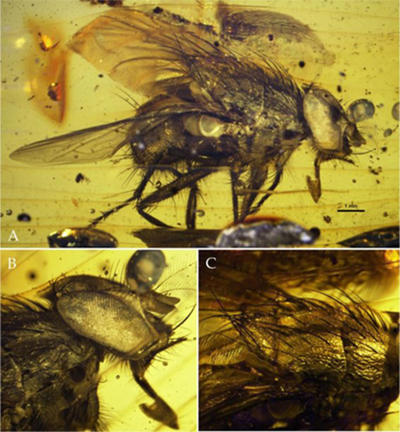
Because there are so many of them, flies have plenty of scope to be helpful or to be a nuisance.
Yet flies, along with other insects, are of primary interest to professor John O. Stireman, Ph.D., in the Department of Biological Sciences with the College of Science and Mathematics. Stireman's focus on insects is due to their immense taxonomic and ecological diversity. They offer countless opportunities to examine a wide range of ecological and evolutionary questions.
Stireman with collaborators P. Cerretti (U. Roma), T. Pape (U. Copenhagen), J.E. O’Hara (CNC), and others, recently published their work on the first unambiguous fossil from the botfly superfamily of a major group of flies (Calyptratae). Their article, titled "First fossil of an oestroid fly (Diptera: Calyptratae: Oestroidea) and the dating of oestroid divergences", was featured in Science Daily, shedding light on the rapid radiation of flies during the Cenozoic Era. For insects, this is like finding the first fossil monkey or cat.
Calyptrate flies include about 22,000 currently known species in existence that are classified into superfamilies; Hippoboscoidea (tsetse, louse, and bat flies), the muscoid grade (house flies and relatives) and the Oestroidea (blow flies, bot flies, flesh flies, and relatives). They are found worldwide, from tropical forests, savannas, and deserts to the extreme High Arctic, and often play key roles as decomposers, parasites, parasitoids, vectors of pathogens, and pollinators.
Examining fossil evidence helps researchers understand the evolution and diversification of organisms and how they are affected by environmental changes. However, there are few reliable calyptrate fossils. This paper describes the first conclusive fossil of Oestroidea based on a perfectly preserved male fly discovered in amber from the Dominican Republic.
Using CT scans the specimen was digitally dissected, identified, and studied. The researchers estimate that a common ancestor of today's calyptrate flies lived about 70 million years ago and that the progression of oestroids began about 50 million years ago.
The image is a holotype of Mesembrinella caenozoica sp. nov. Credit: Cerretti et al (2017); CCAL

